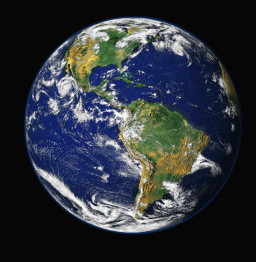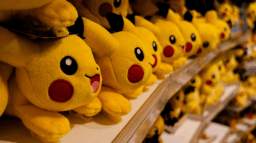International Polar Bear Day
International Polar Bear Day is observed next on Friday, February 27th, 2026 (224 days from today).

Polar bears are charismatic aquatic mammals and the largest bear species in the world – they weigh up to 1,300 pounds and can grow up to 9 feet long. They are excellent swimmers and can maintain a speed of six miles per hour rowing water with their front paws. The total wild population is only about 26,000. February 27, Polar Bear Day is celebrated every year to raise awareness about polar bears.
Polar Bears are common on Arctic sea ice – across Canada, Greenland, Iceland, Japan, Norway, Russia and the United States.
Polar bears are a leading predator in the ecosystem of the Arctic sea that keeps the populations of prey species balanced. About half of a polar bear's life is spent hunting for food because the hunt is rarely successful; some experts say only 2% of the hunt. Polar bears' primary prey includes ringed seals and bearded seals, although they will also pick up carcasses or settle for small mammals, birds, eggs, and vegetation.
Polar bears are very interesting. Female polar bears give birth to 2 to 3 cubs per litter in a nest that winters underground. Here, they avoid the harsh cold and the cubs can suckle and grow up.
Polar bears are quite quiet animals. But in wintering nests, cubs make countless calls, screams, cries, growls, and each of these sounds represents an emotion or intention that the mother bear needs to "translate".
If the cub can't find its mother, or simply won't let it go, it will let out a very sad cry.
If the cub is not in a good mood, he will emit a series of hums or growls to show he is uncomfortable.
In contrast, when the cub is happy, after nursing or when it is asleep, it emits a soothing sound in its throat.
When the cub is hungry, it makes a gurgling sound to let the mother know it's hungry.
And when the cub is nursing, it makes a sound that sounds very comfortable and happy.
The cry of the cub will be answered by the mother bear. If a mother bear is stressed by her cubs' moans, she will often make a purr in response to her displeasure. And when the mother bear participates in the furry activity, it will make a sound that sounds very comfortable and happy.
Finally, after a long day of taking care of her cubs, the mother bear often snores in her sleep...
Understanding the meaning of these sounds helps us understand the importance of the mother-child relationship for polar bears, as well as the need to protect this relationship, ensuring polar bears in the wild and in captivity it is possible to raise offspring in an undisturbed environment.
Many polar bears are being kept in captivity in deplorable conditions in zoos and aquariums. Polar bears are intelligent, large-scale animals, so space-limited and for-profit captivity facilities cannot provide a habitat that allows bears to exhibit extreme behaviors in their natural habitat, cannot meet the diverse physical, behavioral, and psychological needs of bears. This causes the bear to be stressed and suffer a lot. For example, polar bears in captivity often engage in unusually stereotypical behaviors – a sign of stress in captive animals.
According to a study published on July 20, scientists predict that the rapid pace of climate change will cause polar bear populations to seriously decline due to hunger and may become extinct in 90 years. .
The loss of ice due to global warming will force polar bears to live on the ground, where they must rely on fat reserves due to lack of food, from the University of Toronto in Canada’s researchers.
The challenge to polar bears' survival has long been understood, but the new study provides the first timeline of their likely demise.
The study, published in the prestigious journal Nature Climate Change, says drastic cuts to greenhouse gas emissions are needed to save animals from extinction as they rely on ice, which forms over open water, to continue close to the prey.
Traditionally polar bears are hunted mainly at a sustainable rate by indigenous peoples of the Arctic region, for whom polar bear products are a vital resource for survival. However, sport hunting and international trade in polar bears still occurs and populations are declining rapidly. A major reason why trade restrictions pose an increasing threat to the survival of this species has to do with their unusual vulnerability to climate change. They are extremely susceptible to habitat loss due to melting ice, reproduce slowly, and have a specialized, inflexible diet. There are increasing reports of polar bears drowning from exhaustion as their arctic ice shelters melt, leaving gaps between the icebergs, where they hunt for their lips, too far to reach. The oil and gas industry is also eyeing the arctic, and with it the potential risks of habitat destruction from oil extraction. Exposure to an oil spill can reduce the insulating effect of a bear's fur requiring them to use more energy to warm, and can poison them if swallowed. Polar bears can also be exposed to toxic chemicals such as pesticides through their prey, which can affect the bears' biological function and fertility.
History of International Polar Bear Day
The non-profit organization Polar Bears International (PBI) established and introduced International Polar Bear Day in 2011, as their mission to establish programs and actions to protect endangered polar bears this risk of extinction.
Observing International Polar Bear Day
The International Union for Conservation of Nature (IUCN) says that if polar bears live in ice-free conditions, they can only survive for five months. But if there is a "moderate emissions scenario", many subpopulations could continue to exist this century.
"Concluding, drastic reductions in greenhouse gas emissions will be essential to save polar bears from extinction," the study said.
The researchers found that females were most at risk from fasting, while lone adult females would be least affected.
"We can't build a barrier to protect sea ice from rising temperatures," said scientist Steven Amstrup, chief scientist for Polar Bears International, a polar bear conservation organization that pioneered the research. To protect their habitat by halting global warming is the only way to save them."
Let's immediately start reducing carbon emissions today, propagandize as well as raise the awareness of people around about the conservation of Polar Bears from the smallest things. Share to help everyone protect this endangered Polar Bear, using the hashtag #InternationalPolarBearDay.
Observed
International Polar Bear Day has been observed annually on February 27th.Dates
Tuesday, February 27th, 2024
Thursday, February 27th, 2025
Friday, February 27th, 2026
Saturday, February 27th, 2027
Sunday, February 27th, 2028


